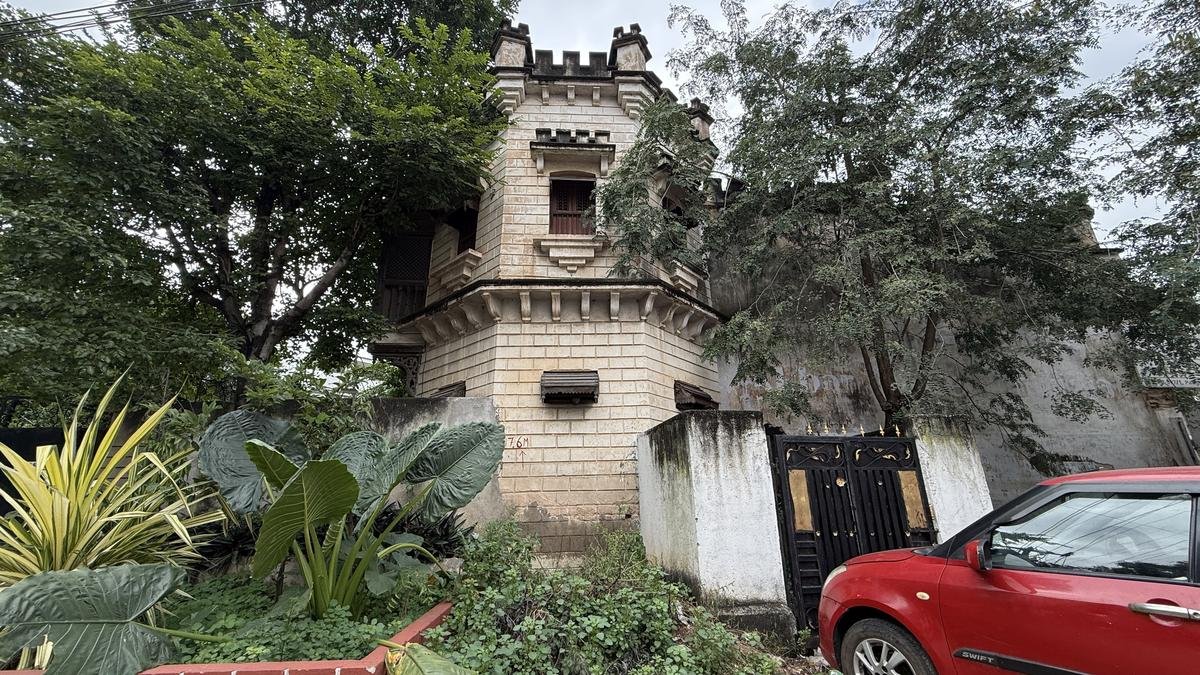A newly proposed elevated road corridor along Patigadda Road in Begumpet, Hyderabad, has ignited concerns among heritage conservationists and local residents. The focus of these concerns is the iconic Paigah Palace complex — known for its architectural and historical significance — which stands in the project’s pathway, raising questions about structural integrity, heritage protection, and urban planning.
The Paigah Palace Complex: A Heritage Landmark
Located on Patigadda Road in Begumpet, the Paigah Palace was built in 1900 by the Paigah nobility of Hyderabad. The complex is noted for its neo-classical architectural features: deep arcaded verandahs, arches, Corinthian columns, and a layout that combines Indian and European design sensibilities. Moreover, the Palace and associated structures are listed in the Hyderabad Master Plan as a heritage site (classification “II-B”) underlining its cultural value.
The Proposed Elevated Corridor: Scope & Purpose
The local civic body, Greater Hyderabad Municipal Corporation (GHMC), has initiated plans to construct a four-lane flyover at Rasoolpura Junction, branching into a “Y-arm” toward Patigadda via Minister’s Road. The flyover is part of the Hyderabad City Innovative and Transformative Infrastructure (H-CITI) programme, with an estimated cost of around ₹150 crore. The structure will begin behind Metro Rail Bhavan at Rasoolpura, one arm extending towards Minister’s Road and the other toward Patigadda Road.
Heritage at Risk: Paigah Palace in the Eye of the Storm
Given the routing of the elevated corridor and its impact zone, the Paigah Palace complex is potentially vulnerable on multiple fronts:
- Structural Integrity: Construction of large infrastructures like elevated roads near heritage buildings introduces risks such as vibration, foundation disturbance and altered drainage, any of which could damage delicate walls, columns and stucco finishes of a century-old structure.
- Visual & Environmental Impact: An elevated corridor looming over a heritage complex could mar the aesthetic character, setting and ambience that contribute to its heritage value.
- Land Use & Buffer Zones: Heritage policy typically suggests buffer zones around listed structures; the corridor may encroach into such areas and reduce space available for gardens, open courtyards or landscaped surroundings that are part of the Palace’s character.
Stakeholder Concerns and Public Response
Local residents are already pointing out other issues on Patigadda Road such as water stagnation and inadequate drainage, especially near the Paigah Palace, which shows the underlying infrastructure stress. Hyderabad Mail Heritage advocates are calling for a detailed heritage impact assessment before construction proceeds. They argue the project must neither compromise the Palace’s structure nor its setting.
Urban Connectivity vs Heritage Conservation: The Balance
Proponents of the elevated corridor emphasise that it aims to ease traffic congestion on busy feeder roads into Begumpet and Secunderabad, improve connectivity and reduce travel time. While these objectives are legitimate, the challenge lies in reconciling them with heritage conservation. Key questions arise:
- Is there a technically feasible alignment that avoids or minimally impacts the Palace complex?
- Have alternative designs (such as tunnelling, narrower ramp widths or relocating ramps) been explored to protect heritage assets?
- Will the construction contract include heritage protection clauses, vibration monitoring, foundation safeguarding and post-construction restoration?
Recommendations for Moving Forward
To ensure a balanced outcome, the following steps are critical:
- Comprehensive Heritage Impact Assessment (HIA): Before civil works begin, an HIA should be carried out by qualified conservation engineers and archaeologists, studying potential risks to the Paigah Palace complex and recommending mitigation measures.
- Public Consultation & Transparency: Local heritage committees, residents’ associations and conservation bodies should be involved in the planning process. Their input on design alternatives, buffer zones and traffic mitigation may improve acceptance and reduce future disputes.
- Design Alternatives & Avoidance: Explore options such as slightly rerouting the Y-arm, reducing pillar sizes, elevating only where essential, and incorporating sensitive landscaping to preserve the Palace’s setting.
- Monitoring and Mitigation During Construction: Introduce measures like vibration sensors near heritage structures, foundation settlement monitoring, noise controls, and dedicated drainage works to prevent ancillary damage.
- Post-Construction Restoration & Buffer Enhancement: Once the corridor is complete, restoring the Palace’s immediate surroundings (gardens, courtyards, façade cleaning) and reinforcing the buffer between heritage and infrastructure is vital.
Conclusion
The proposed elevated road corridor along Patigadda Road brings together two significant urban narratives: modern infrastructure development and heritage conservation. For the Paigah Palace complex—an architectural jewel of Hyderabad—this is perhaps a defining moment. If handled poorly, the project could undermine the heritage fabric; however, if managed sensitively with full regard for the Palace’s structural and visual integrity, it can become a model of how heritage and modernity can co-exist. The key lies in planning, stakeholder participation and design ingenuity.







